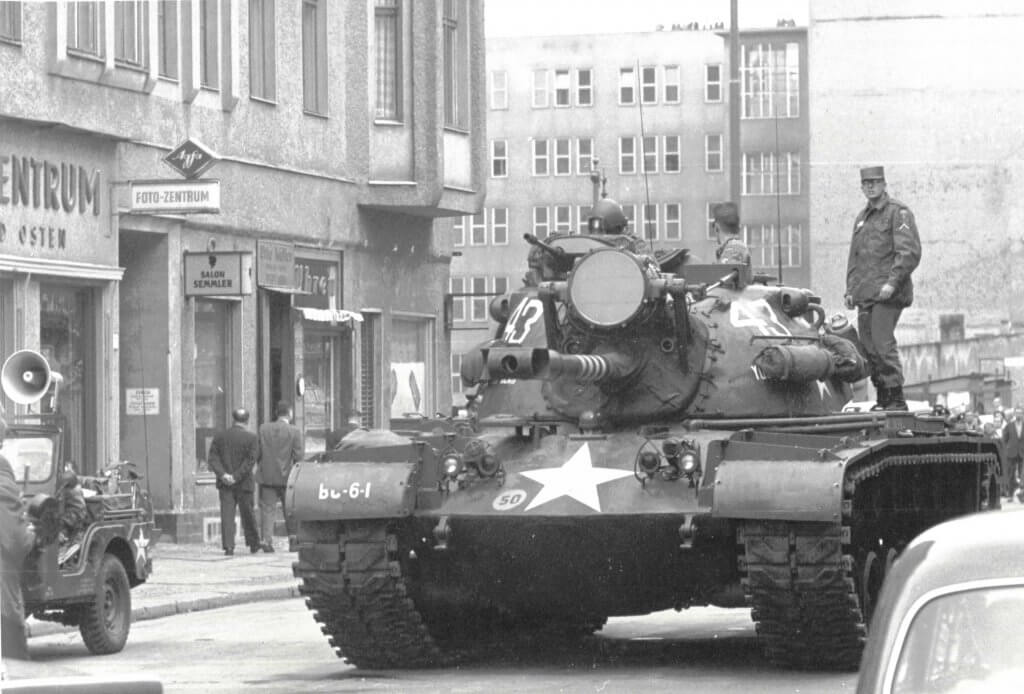On Aug. 25, 1961, 15 military intelligence reserve units were called up in response to Soviet Premier Nikita Khrushchev’s demand that the United States, Great Britain and France remove their forces from West Berlin by the end of the year.
The mobilization for what became known as the Berlin crisis lasted nearly a year and, while not popular, helped deter a fighting war with the Soviet Union.
In the years following World War II, distrust and tension ran high between the western allies and the Soviet Union over the division of the German city of Berlin. By the late 1950s, the mass exodus of East Germans fleeing into West Berlin led Khrushchev to issue an ultimatum demanding the United States, France and Great Britain depart their sectors of the city within six months.
Discussions between Khrushchev and U.S. President Dwight D. Eisenhower broke down without solution. Shortly after taking office in early 1961, President John F. Kennedy resumed talks with Khrushchev but, in June, the Soviet Premier restated his earlier ultimatum with a clear warning of military response if it went unheeded.
On July 25, 1961, Kennedy asserted the United States would fight over West Berlin if necessary. At his request, on Aug. 1, Congress authorized him to order as many as 250,000 Ready Reservists, both units and individuals, to active duty for not more than 12 months. Two weeks later, Khrushchev sealed the borders between East and West Berlin and began construction of the Berlin Wall.
In response, on Aug. 25, the U.S. Army alerted 113 Army National Guard and U.S. Army Reserve units for mobilization. The number was soon increased to 210. The first 76,500 troops were to report to their mobilization points by Oct. 1, while another 82,350 were to report by Oct. 15.
These personnel backfilled positions in stateside active-duty divisions that deployed to Europe in response to the Berlin crisis. MI units mobilized during this period included:
- 324th U.S. Army Security Agency (ASA) Battalion, Chicago, Illinois
- 325th U.S. ASA Battalion, Bell, California
- 197th ASA Company, New York, New York
- 310th MI Platoon (Regimental Combat Team [RCT]), St. Petersburg, Florida
- 372d MI Platoon (RCT), Jasper, Alabama
- 380th MI Platoon (RCT), Madison, Wisconsin
- 393d MI Platoon (RCT), Las Cruces, New Mexico
- 531st MI Platoon (RCT), Jacksonville, Florida
- 223d MI Detachment (Division), Fort Meyer, Virginia
- 226th MI Detachment (Corps), Fort Meyer, Virginia
- 342d MI Detachment (Division), Cleveland, Ohio
- 347th MI Detachment (Logistics Command), Fort Worth, Texas
- 349th MI Detachment (Counterintelligence), Dallas, Texas
- 421st MI Detachment (Strategic), Boston, Massachusetts
- 469th MI Detachment (Strategic), Fort Snelling, Minnesota
Although the Berlin Crisis escalated in October, with American and Soviet tanks facing each other across the border, by mid-November, the immediate threat abated. On Nov. 17, Secretary of Defense Robert McNamara halted additional mobilizations. Five months later, he called for the mobilized forces to be released on Aug. 1, 1962.
Military authorities called the mobilization effort a “qualified success,” but it had been unpopular among many of the reservists. They complained they had no clear purpose, little meaningful work, assignments for which they were not qualified or trained, inadequate or obsolete equipment, and poor living conditions. Still, the mobilization had helped deter a hot war with the Soviets and demonstrated the U.S. commitment to the security of West Berlin.

